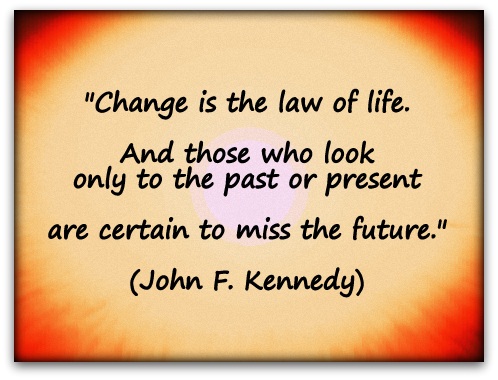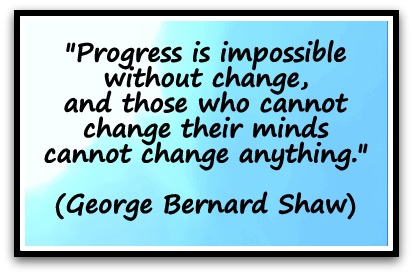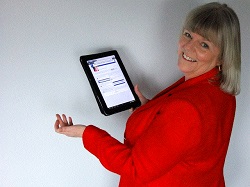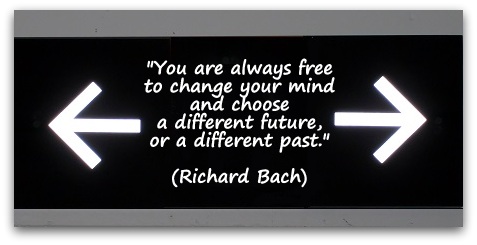Do You Need to Freshen Things Up? 2
In today’s guest post, as we approach the end of April, Content Creator Extraordinaire Dawn Goldberg Shuler asks:
Do You Need to Freshen Things Up?
by Dawn Goldberg Shuler
I have a cool memorabilia board, and I switch it out every now and then. Through February, it still had Christmas cards and the like hung on it. As it came to my consciousness that it was time to change it out, it occurred to me that I was freshening up the energy.
There’s a difference between clearing out old, stuck energy… and renewing energy that might be fine… and could use some rejuvenation.
That’s key to creativity… don’t just create something and then be done with it… (Wordsworth hated to publish his works because then he felt they were dead)… revisit it and see if it needs to be freshened up.
Here are a few examples of what this looks like in real life (and business):
Your theme for the year. It might have been exactly what you needed on January 1, but now that a couple of months have gone by, is it still appropriate? Or have you moved through what you needed to move through, and now it’s time to choose a new theme?
Your brand. As entrepreneurs, we tend to reinvent ourselves quite often… AND we can get stuck behind a tagline or title from years ago. As you evolve and clarify who you are – inside – do you need to freshen up what that looks like on the outside?
Your marketing strategy for the next quarter. As a smart business owner, you may have planned out the next quarter, or, heck, the next year. AND things change. You evolve (as I mentioned before). The market shifts. You get clearer. So, with all that in mind, revisit your marketing strategy and see if there’s any freshening up as needed. It may not mean an entire overhaul; perhaps you just have a new twist on how you’re going to market that program coming up.
Your environment, big and small. I recently rearranged my entire office as the old arrangement certainly felt like stuck energy. To freshen things up, though, I’ve made small changes, too, like making a space in a desk drawer for my daily to-do lists so that they don’t have to live on my desk (and be a visual reminder of what I have to do). I took off some knickknacks and added new ones. You could get different pens to use, a new picture, or something lovely to help energize you.
Banner on Facebook. Not only is this good to do so you show up in the Facebook newsfeed (Facebook loves graphics), but it’s a perfect place to freshen things up. Get rid of that banner from two years ago, and replace it with a new, current, relevant one.
Headlines on a webpage. I’m not calling for an entire revamp, just look over your existing headlines. Maybe changing out a word or a phrase will punch it up. Maybe adding a completely new – and more compelling – headline that will add that fresh touch.
There are probably many more places to freshen up the energy around you – to make you feel better, make you smile, give you a boost, and to even eliminate some of those little things.
It all leads to a fresher you, a more authentic you, and a more grounded you.
Which is good for business.
About Dawn Goldberg Shuler
Dawn Shuler, Content Creator Extraordinaire, has been working with writing and the writing process all her life, from teaching English to working with companies to improve their communications and marketing materials.
Her soul purpose is to help people unleash their authentic selves into their daily lives through their words. She works with business owners, entrepreneurs, and authors to convey their deep message into compelling, potent words, whether it’s a website or a book, as well as to create powerful content to increase their credibility, visibility, and profitability. Visit www.WritingFromYourSoul.com to get a sense of the work she does as well as download her free Writing From Your Soul system.
Article Source: Do You Need to Freshen Things Up?
Ezinearticles Author link: Dawn Goldberg Shuler






 Amanda Clegg has been a science teacher in state secondary schools for almost thirty years. She was a member of a Senior Leadership team for 15 years before being asked to lead a private sixth form college through their initial ISI inspection. The college achieved an outstanding judgement. Amanda now works as an Educational and Coaching Consultant in Oxfordshire and Swindon. She is currently acting as temporary Head of Science two days a week in a local secondary school, as well as being an Associate trainer for Creative Education, co-author of a GCSE revision guide and an Associate Lecturer for UWE on the PGCE programme.
Amanda Clegg has been a science teacher in state secondary schools for almost thirty years. She was a member of a Senior Leadership team for 15 years before being asked to lead a private sixth form college through their initial ISI inspection. The college achieved an outstanding judgement. Amanda now works as an Educational and Coaching Consultant in Oxfordshire and Swindon. She is currently acting as temporary Head of Science two days a week in a local secondary school, as well as being an Associate trainer for Creative Education, co-author of a GCSE revision guide and an Associate Lecturer for UWE on the PGCE programme.

